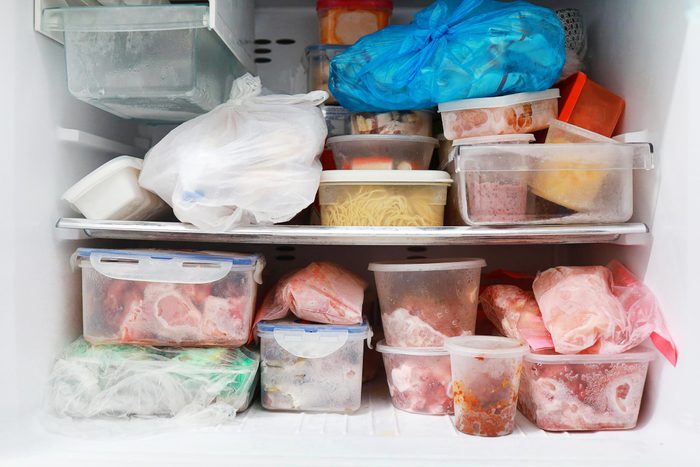Spring Cleaning Your Freezer
Updated: Apr. 10, 2024

Could you make dinner with what's in your freezer? Would you want to? If not, it's probably time to clean it. Here's how.
It’s almost dinnertime and you haven’t been to the store. Perfect time to see what the freezer holds. You look inside and start the internal negotiations.
What is this? Was this chicken good when I put it in here? Did I buy that bag of green beans during this decade?
If you clean your freezer regularly, these questions are easier to answer. But cleaning the freezer is easy to put off. After all, you open your refrigerator 20 times a day. You notice the fresh fruit that needs to be eaten or the milk that’s beginning to turn, as well as spills and crumbs.
Freezers, though? Sometimes they’re a black hole. Food goes in, often with the best of intentions, never to be seen again. Cleaning your freezer lets you re-familiarize yourself with its contents. Doing this regularly can help you save money and waste less food.
I spoke with Alicia Sokolowski, president and co-CEO of AspenClean, to learn the best way to tackle this necessary task. This method works on any freezer, including side-by-side, French door, top, standalone and chest types. The only difference may be the defrosting time.
On This Page
Gather Freezer Cleaning Supplies
- Dishwashing soap;
- Natural kitchen cleaner (optional);
- Microfiber cloths;
- Vinegar and water mixture (optional);
- Dish sponge;
- Small bucket or bowl;
- Old towels or newspaper;
- Cooler large enough to store what’s in the freezer;
- Permanent marker pen.
Move Food to Cooler
Don’t try to clean around the food in your freezer. Empty it so you can take out the shelves, drawers and other removable parts. They’ll be easier to clean. And without a bunch of stuff in your way, you can really get into the nooks and crannies.
Sort and Discard
Toss old food or anything you can’t identify, Sokolowski says. As you’re filling your cooler, examine each item. Are you really going to eat that? Is it covered in ice crystals? Do you remember putting it in there? When in doubt, throw it out.
Label things you want to keep with a permanent marker pen, noting the contents and the date (if known) on the side of the container. This will cut down the guesswork next time you’re rummaging for something to cook. Keep the cooler lid closed until you’re ready to refill the freezer.
Protect Your Floor
Place old towels or newspapers on the floor around the bottom of the appliance. Even if you have a frost-free or self-defrosting freezer with little ice accumulation, you’ll likely have some melting ice crystals, as well as drips from your cleaning solution.
Chest and standalone freezers are often manual defrost instead of frost-free. With these, expect more melting ice and longer defrost times, especially if there’s a lot of ice buildup. Be prepared with extra towels.
Unplug the Freezer
Don’t try to clean your freezer while it’s running. You’ll waste energy, Sokolowski says, and add unnecessary complications. Frost will accumulate, which will melt and refreeze as you try to clean. You’re taking everything out anyway, so unplug it.
Keep the refrigerator door closed while you clean the freezer. Without power, a fridge with the door closed stays cold for four hours, according to Foodsafety.gov.
Remove the Shelves
Take out the shelves, drawers and other removable parts. Be sure to let them come to room temperature before washing. If you fill your sink with hot soapy water and dunk in your ice-cold shelves, they’re likely to crack, Sokolowski says.
Clean the Inside
Wipe down the interior with a sponge and a natural kitchen cleaner, hot soapy water or a 50/50 mix of vinegar and water. Rinse and wipe dry with a microfiber cloth or towel.
Sokolowski recommends natural cleaners only. Look for certifications from the Environmental Working Group and the anti-cruelty Coalition for Consumer Information on Cosmetics — known by their “Leaping Bunny” logo — to reduce your cleaning footprint.
Clean the Shelves
With the shelves and drawers at room temperature, wash them by hand in the sink with hot soapy water. Rinse and air dry, or dry with a microfiber cloth or towel. Once dry, put them back in the freezer.
Plug In and Refill
Plug in the freezer and let it reach freezing temperature before refilling. Organize your freezer so you can find things fast and avoid a menagerie of unrecognizable, forgotten items the next time you clean — which, according to Sokolowski, should be in three to four months.
